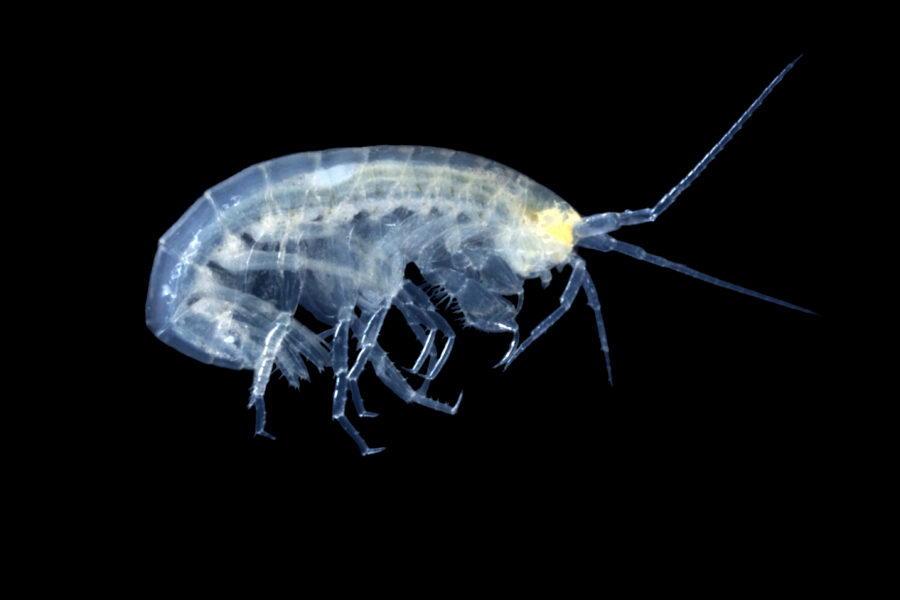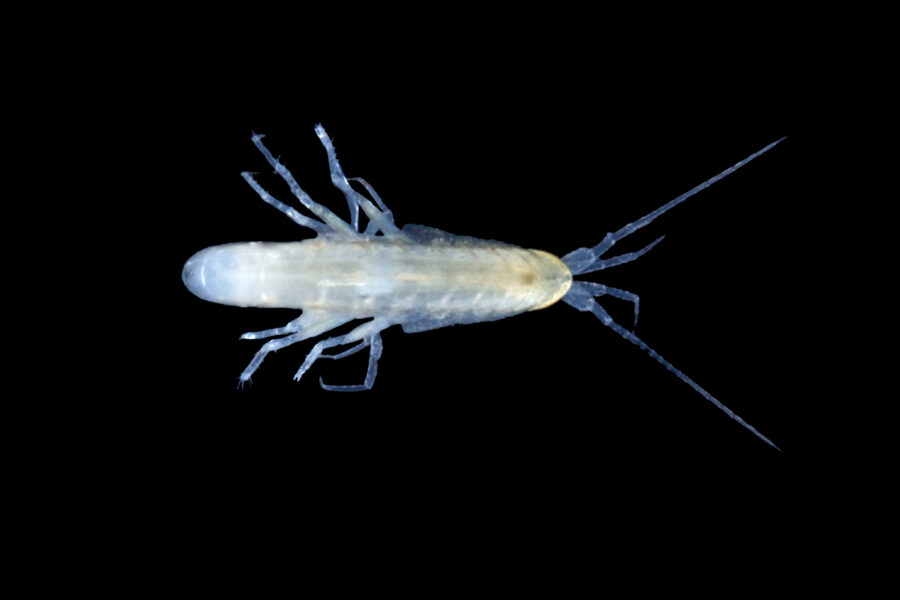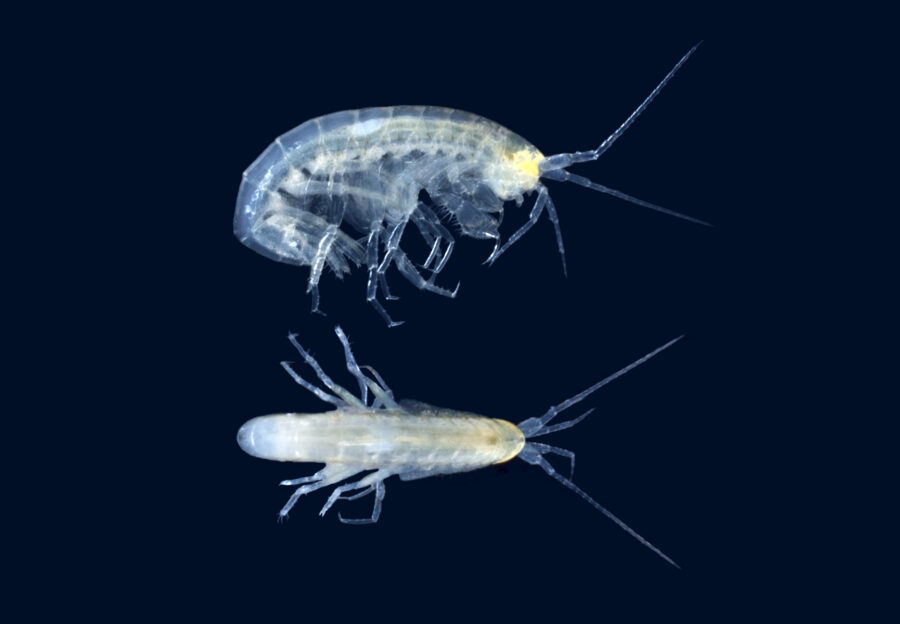
Cave Dwarf Amphipod - Cave Animal of the Year 2026
Introduction
The cave dwarf amphipod (Crangonyx subterraneus) belongs to the order Amphipoda and was first described scientifically by the British zoologist Charles Spence BATE in 1859. The cave dwarf amphipod is a typical groundwater dweller and is found in groundwater habitats (springs, wells, river sediments, mines and caves). The species has neither body pigmentation nor eyes. The fact that the groundwater amphipod cannot survive outside its underground habitat led to the species being chosen as “Cave Animal 2026.”
The cave dwarf amphipod represents a large number of species, which are depending on a intact ecosystem in subterranean waters. The Verband der deutschen Höhlen- und Karstforscher e.V. (German Speleological Society) has chosen the Cave Animal of the Year to point out the immense deficiencies in the research of subterranean ecosystems and their associated faunas.
Description
The genus Crangonyx is mainly found in North America; only a few species are known in Europe. The majority of species in this genus have neither body pigmentation nor eyes. However, there are surface species that do have eyes. Due to their small body size of about 3 millimeters, these species are found not only in rocky areas, but also in sandy and fine-pored groundwater bodies. It moves by swimming or walking on the sediment, but mainly with its back facing upwards. Like all amphipods, the cave dwarf amphipod breathes through gills and therefore requires oxygen-rich groundwater.
Due to its characteristic mode of locomotion, the species can also be distinguished directly in situ from cave amphipods of the genus Niphargus, which swim sideways. Under the microscope, Crangonyx has a only slightly indented last body segment (telson), which is strongly divided in the genus Niphargus. The tail appendages (uropods) are all the same length.
Distribution
The cave dwarf amphipod is found in Western and Central Europe and Great Britain. In Germany, the species is widespread but only locally common. In Poland, the species Crangonyx paxi, which is difficult to distinguish, occurs.


